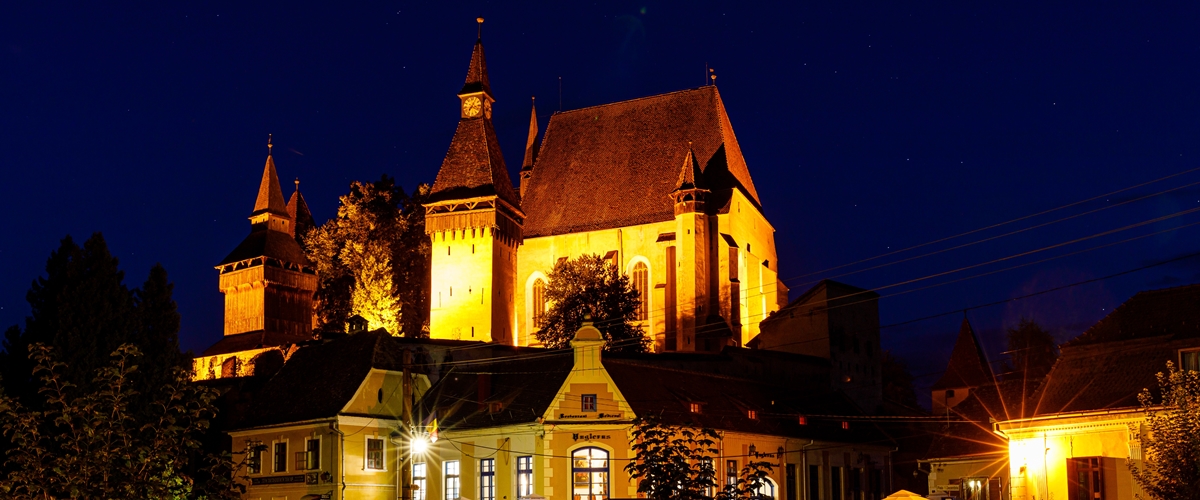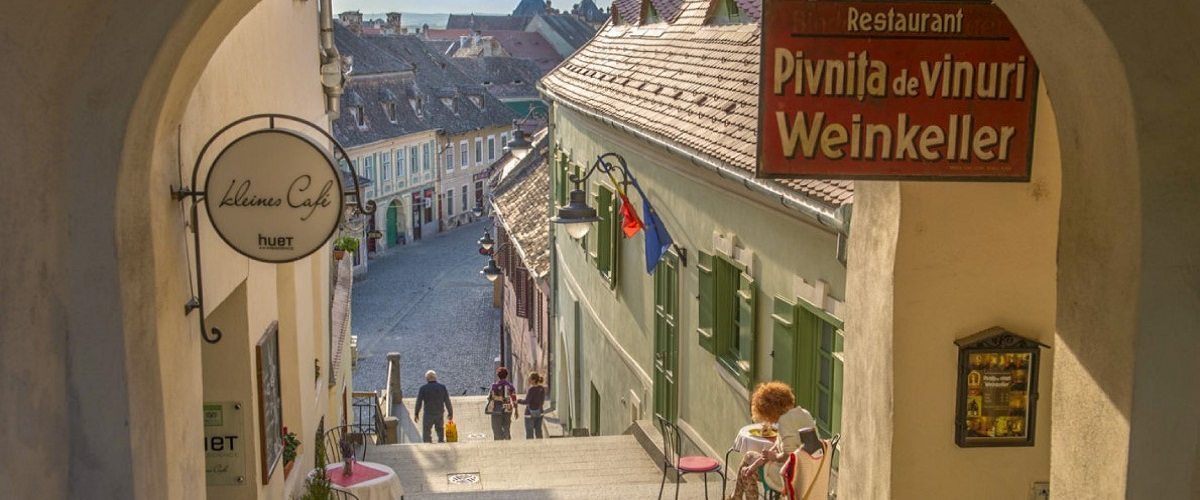Biertan Fortified Church
Located in the village of Biertan (Birthälm), Sibiu County, in the Transylvania region of Romania, the Biertan fortified church is a Lutheran fortified church that was built by the German Transylvanian Saxon population. Village Biertan in Transylvania is home to one of the largest and most impressive medieval strongholds in Transylvania. The architectonic ensemble from Biertan impresses by being such a harmonious match to the scenery around it, by its esthetic and historic value and especially by the original substance preserved, characteristics which determined its inclusion on The UNESCO List of World Patrimony.
Biertan village is testified for the first time in documents in 1283, along with other 7 villages, inhabited in that period by the Saxons of Transylvania, in a document about the taxes demanded to the Catholic priests from the Transylvanian - Saxon communities by the Catholic Capital from Alba Iulia.
The fortified Church of Biertan was the Evangelic Episcopal Seat for 300 years (1572 – 1867), and the religious centre for the Saxons in Transylvania. Built on a hill situated in the center of the locality, the church dominates the streets and the houses around it.
In 1993 it was included in the UNESCO world patrimony, being considered the most valuable of the seven Saxon attraction points included on that list.
Design of the church. Built by master Johannes Reichmuth of Sighisoara around 1515, it has a central system that blocks the door at 19 spots, ensuring the security of the jewels held in the sacristy. According to the WORLD RECORD ACADEMY, it holds the record for being the World's Most Complicated Church Lock. There are nine gate towers connecting the church's three rows of outside security measures. The first, which has four towers, was built in the fourteenth century; the second, which was erected alongside the church and has a number of supporting arches; and the third, which also has towers, is from the sixteenth and seventeenth centuries. In the inner barriers the clock tower to the north of the cathedral serves as a gate. It is four floors tall and has parapets and a wooden battlement. The sacristy door, one of the most attractive characteristics for guests, won a medal for originality at a Parisian exhibition in 1910.The intricate locking mechanism controlled by a wrench and a crank was made all the more complex by this piece's uniqueness. The key activates four devices, while the crank operates fifteen more. All of the community's valuables were kept here in case of an assault. The 16th century marked the construction of the stone baptismal font in the late Gothic style. It is partially buried under the floor and has lily blossom decorations. In contrast to the spartan style that was prevalent, its chapel (ca. 1520–1530) includes a unique example of Transylvanian mural painting from the 16th century.
Legend. The residence has a "matrimonial prison" where divorcing spouses were imprisoned until they were certain they wanted to break their marriage. The imprisonment lasted for two weeks, but if the two partners could get along, they could have been out sooner. They were required to share a single bed, a single plate, and one spoon. Only one couple ended up divorcing in the three centuries that priests living in Biertan imposed this tradition.
Today, a walk through Biertan is like traveling through time. The whispers of Saxon settlers, the echoes of medieval traders, and the silent songs of craftsmen linger in its air. It’s a village that wears its history with pride, inviting all to partake in its timeless tales.
Visit price is 2 EUR, and visiting schedule:
April-May
Sunday-Saturday: 10:00-17:00
June-August
Sunday-Friday: 10:00-19:00
Saturday: 10:00-17:00
September-Octomber
Sunday-Saturday: 10:00-17:00
November to April
Tuesday-Sunday: 11:00-15:00





.png)



